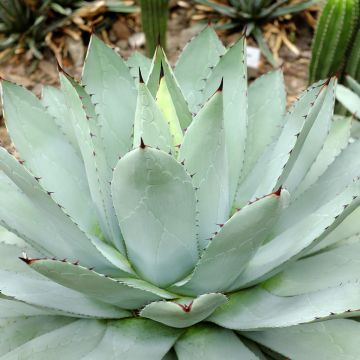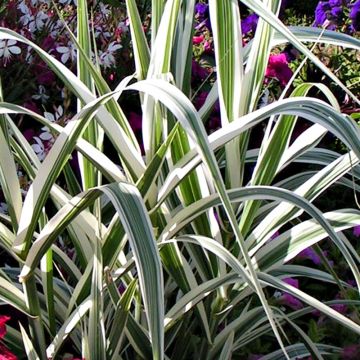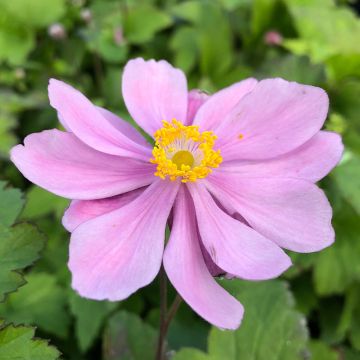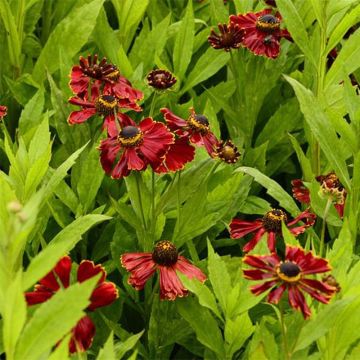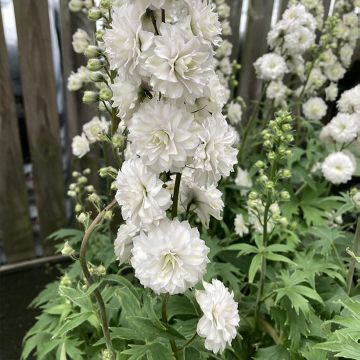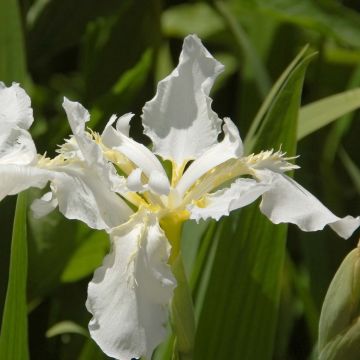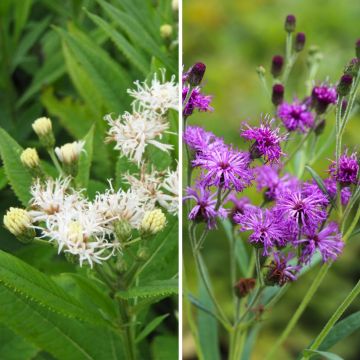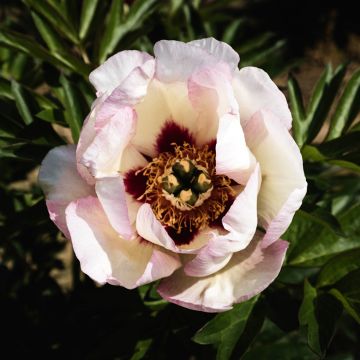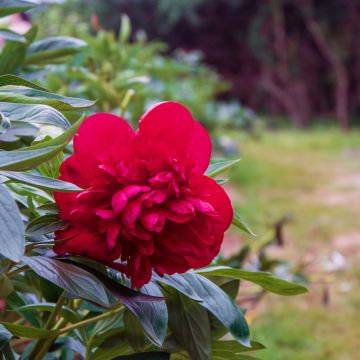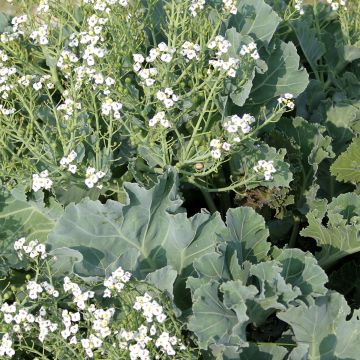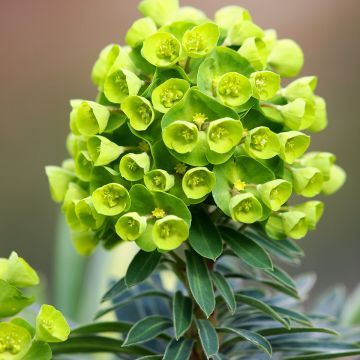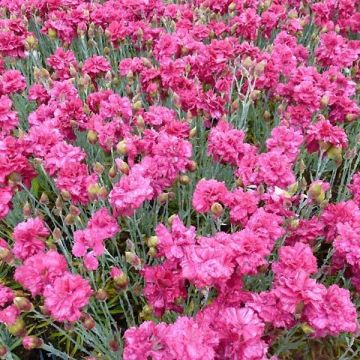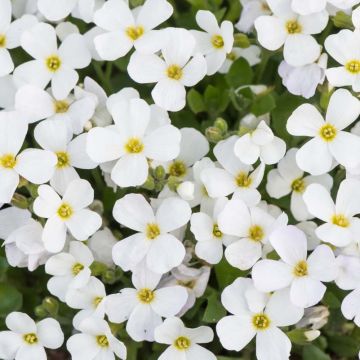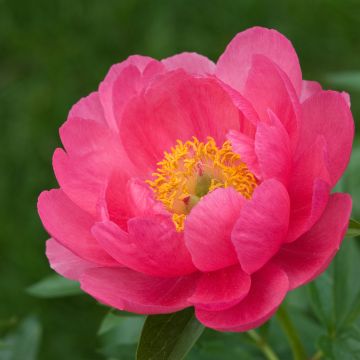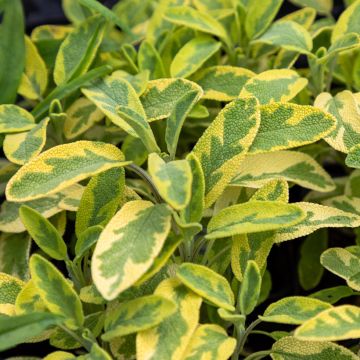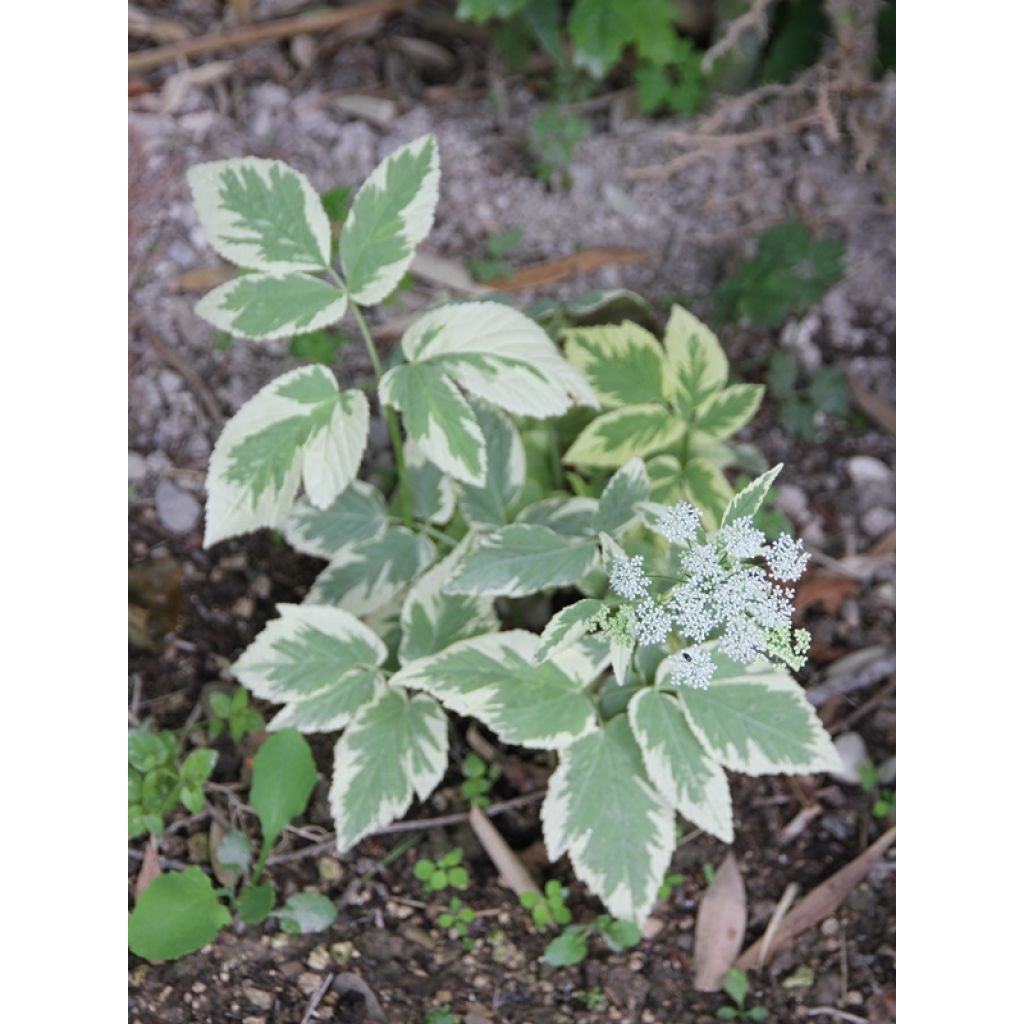

Aegopodium podagraria Variegata
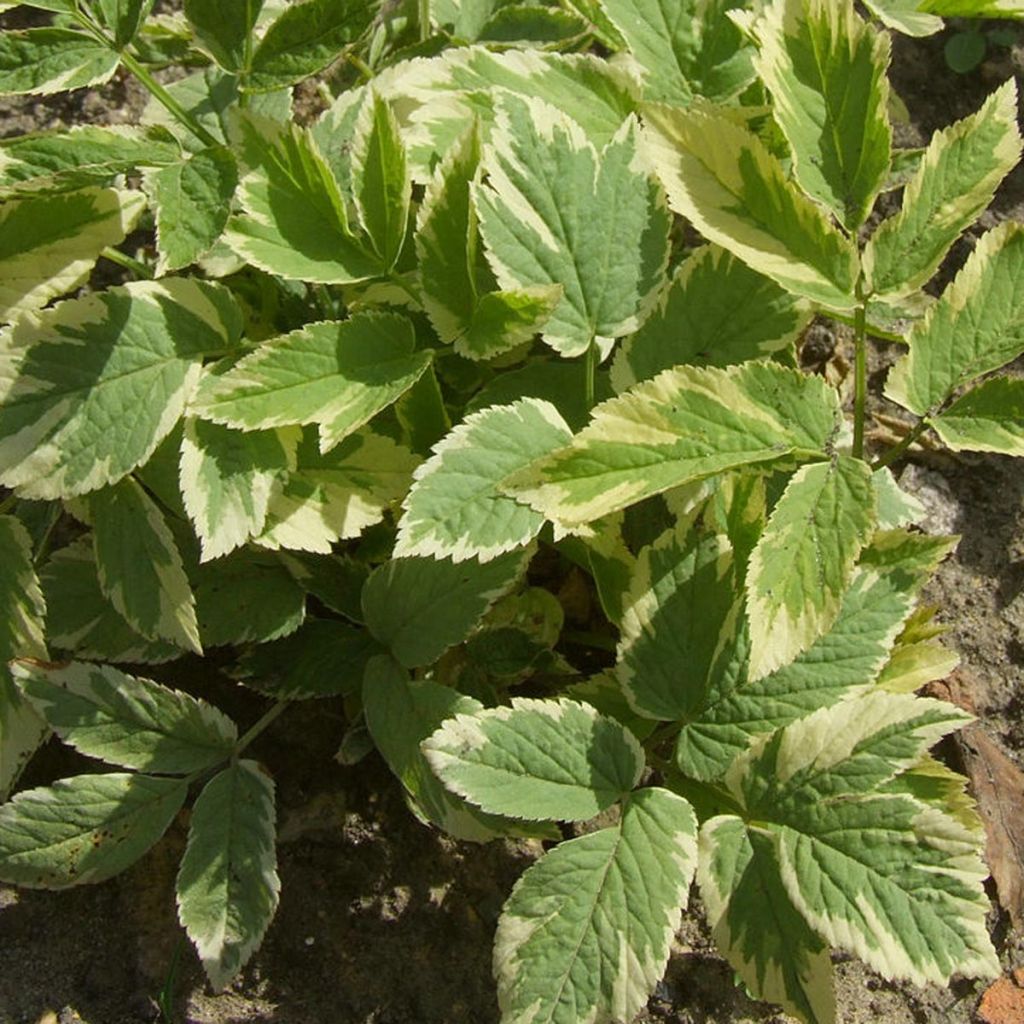

Aegopodium podagraria Variegata
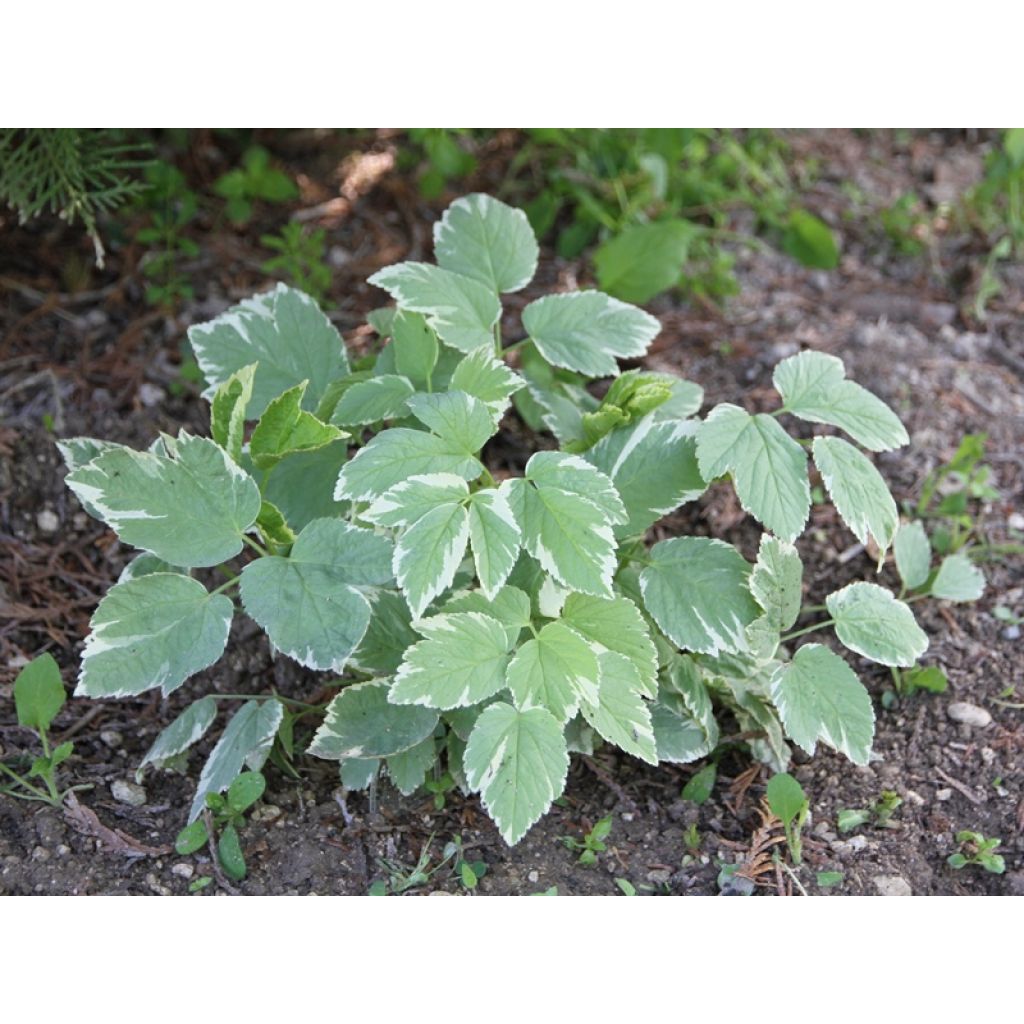

Aegopodium podagraria Variegata
Aegopodium podagraria Variegata
Aegopodium podagaria Variegata
Variegated Ground Elder, Bishop's Weed, Goutweed
This item cannot be shipped to the selected country
Delivery charge from €5.90
Delivery charge from €5.90
More information
Schedule delivery date,
and select date in basket
This plant carries a 12 months recovery warranty
More information
We guarantee the quality of our plants for a full growing cycle, and will replace at our expense any plant that fails to recover under normal climatic and planting conditions.
From €5.90 for pickup delivery and €6.90 for home delivery
Express home delivery from €8.90.
From €5.90 for pickup delivery and €6.90 for home delivery
Express home delivery from €8.90.
Does this plant fit my garden?
Set up your Plantfit profile →
Description
Aegopodium podagraria 'Variegata' is an excellent hardy ground cover to be adopted at the foot of a tree, in the undergrowth. Some use it in the vegetable garden as an edible and medicinal plant.
This perennial forms a dense leafy carpet with light green leaves marginated with white, composed of 3 finely toothed ovate lanceolate leaflets on which appear umbels of very small white flowers between May and August.
Originally from northern Eurasia, Aegopodium podagraria 'Variegata' is found in the wild in shady situations, on the edge of woods and under deciduous woods... You can take inspiration from it in a wild garden. It can be established in any soil with a preference for fresh and chalky soils.
Aegopodium podagraria 'Variegata' grows rapidly and can become invasive as its expansion occurs mainly through its deep rhizomes. This colonizing force is such that it prevents any competition where it settles, to the point of causing the death of perennials and small bushes that surround it. It is therefore ideal for dressing and brightening a shaded tree base where nothing grows, provided that its expansion is monitored beyond the reserved area.
Furthermore, due to its edible nature and medicinal virtues which have earned it the name of Herb of the gouty , you can plant it in the vegetable garden or in a cottage garden, preferably in a pot that you can bury, alongside Common Angelica, Common Agrimony, Common or Fragrant Verbena, and the Roman Chamomile. Still used today in some countries as a vegetable or aromatic herb, it has been known since antiquity to treat gout.
Report an error about the product description
Aegopodium podagraria Variegata in pictures




Flowering
Foliage
Plant habit
Botanical data
Aegopodium
podagaria
Variegata
Apiaceae
Variegated Ground Elder, Bishop's Weed, Goutweed
Northern Europe
Other Perennials A to Z
Planting and care
Aegopodium podagraria 'Variegata' thrives in well-drained and moist soil, even poor and chalky, with a partially shaded to shaded exposure. It can comfortably spread under trees, with tree root-invaded soils causing no issues. Planting is preferably done in spring or autumn. Limit its spread by removing excess stolons and trim faded flowers before seed formation.
Planting period
Intended location
Care
-
, onOrder confirmed
Reply from on Promesse de fleurs
Spring flowering perennials
Haven't found what you were looking for?
Hardiness is the lowest winter temperature a plant can endure without suffering serious damage or even dying. However, hardiness is affected by location (a sheltered area, such as a patio), protection (winter cover) and soil type (hardiness is improved by well-drained soil).

Photo Sharing Terms & Conditions
In order to encourage gardeners to interact and share their experiences, Promesse de fleurs offers various media enabling content to be uploaded onto its Site - in particular via the ‘Photo sharing’ module.
The User agrees to refrain from:
- Posting any content that is illegal, prejudicial, insulting, racist, inciteful to hatred, revisionist, contrary to public decency, that infringes on privacy or on the privacy rights of third parties, in particular the publicity rights of persons and goods, intellectual property rights, or the right to privacy.
- Submitting content on behalf of a third party;
- Impersonate the identity of a third party and/or publish any personal information about a third party;
In general, the User undertakes to refrain from any unethical behaviour.
All Content (in particular text, comments, files, images, photos, videos, creative works, etc.), which may be subject to property or intellectual property rights, image or other private rights, shall remain the property of the User, subject to the limited rights granted by the terms of the licence granted by Promesse de fleurs as stated below. Users are at liberty to publish or not to publish such Content on the Site, notably via the ‘Photo Sharing’ facility, and accept that this Content shall be made public and freely accessible, notably on the Internet.
Users further acknowledge, undertake to have ,and guarantee that they hold all necessary rights and permissions to publish such material on the Site, in particular with regard to the legislation in force pertaining to any privacy, property, intellectual property, image, or contractual rights, or rights of any other nature. By publishing such Content on the Site, Users acknowledge accepting full liability as publishers of the Content within the meaning of the law, and grant Promesse de fleurs, free of charge, an inclusive, worldwide licence for the said Content for the entire duration of its publication, including all reproduction, representation, up/downloading, displaying, performing, transmission, and storage rights.
Users also grant permission for their name to be linked to the Content and accept that this link may not always be made available.
By engaging in posting material, Users consent to their Content becoming automatically accessible on the Internet, in particular on other sites and/or blogs and/or web pages of the Promesse de fleurs site, including in particular social pages and the Promesse de fleurs catalogue.
Users may secure the removal of entrusted content free of charge by issuing a simple request via our contact form.
The flowering period indicated on our website applies to countries and regions located in USDA zone 8 (France, the United Kingdom, Ireland, the Netherlands, etc.)
It will vary according to where you live:
- In zones 9 to 10 (Italy, Spain, Greece, etc.), flowering will occur about 2 to 4 weeks earlier.
- In zones 6 to 7 (Germany, Poland, Slovenia, and lower mountainous regions), flowering will be delayed by 2 to 3 weeks.
- In zone 5 (Central Europe, Scandinavia), blooming will be delayed by 3 to 5 weeks.
In temperate climates, pruning of spring-flowering shrubs (forsythia, spireas, etc.) should be done just after flowering.
Pruning of summer-flowering shrubs (Indian Lilac, Perovskia, etc.) can be done in winter or spring.
In cold regions as well as with frost-sensitive plants, avoid pruning too early when severe frosts may still occur.
The planting period indicated on our website applies to countries and regions located in USDA zone 8 (France, United Kingdom, Ireland, Netherlands).
It will vary according to where you live:
- In Mediterranean zones (Marseille, Madrid, Milan, etc.), autumn and winter are the best planting periods.
- In continental zones (Strasbourg, Munich, Vienna, etc.), delay planting by 2 to 3 weeks in spring and bring it forward by 2 to 4 weeks in autumn.
- In mountainous regions (the Alps, Pyrenees, Carpathians, etc.), it is best to plant in late spring (May-June) or late summer (August-September).
The harvesting period indicated on our website applies to countries and regions in USDA zone 8 (France, England, Ireland, the Netherlands).
In colder areas (Scandinavia, Poland, Austria...) fruit and vegetable harvests are likely to be delayed by 3-4 weeks.
In warmer areas (Italy, Spain, Greece, etc.), harvesting will probably take place earlier, depending on weather conditions.
The sowing periods indicated on our website apply to countries and regions within USDA Zone 8 (France, UK, Ireland, Netherlands).
In colder areas (Scandinavia, Poland, Austria...), delay any outdoor sowing by 3-4 weeks, or sow under glass.
In warmer climes (Italy, Spain, Greece, etc.), bring outdoor sowing forward by a few weeks.


































